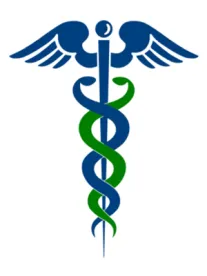On April 16, 2015, President Obama signed into law H.R. 2, the "Medicare Access and CHIP Reauthorization Act of 2015" (MACRA), a bipartisan effort to reform the Medicare payment policy for physician services that adopts a series of important policy changes affecting a wide range of providers and suppliers. Most notably, Section 101 repealed the sustainable growth rate (SGR) formula for updating Medicare physician fee schedule (PFS) payment rates and substituted a series of specified annual update percentages. MACRA establishes a new methodology that ties annual PFS payment adjustments to "value" metrics through a Merit-Based Incentive Payment System (MIPS) for MIPS-eligible professionals, as well as through an incentive program to encourage participation in Alternative Payment Models (APMs). While changes to physician payment provisions were the impetus of the legislation, it also includes other provisions of great import for health care providers.
The Repeal of the Sustainable Growth Rate
The centerpiece of the legislation is the permanent repeal of the unpopular statutory Sustainable Growth Rate (SGR) formula. The SGR was established in 1997 with the intent of slowing the growth of Medicare expenditures on physician services by automatically adjusting individual service payment amounts when aggregate payments exceeded a prescribed target. The SGR first became a problem in 2002 when it mandated a 4.8% cut to Medicare payments. In every year since it called for progressively larger fee cuts, which Congress repeatedly prevented. With a 21% cut set for April 1, 2015, MACRA's permanent repeal of the SGR overrode this cut as well as future proposed cuts in Medicare physician payments.
After a period of stable payment updates, MACRA will instead link physician payment updates to quality, value measurements, and participation in alternative payment models. While the bill retains Medicare's fee-for-service payment model and participation in new models is entirely voluntary, the legislation highly incentivizes and supports transitioning to new and significantly different payment and delivery models. MACRA establishes an alternative set of predictable annual baseline payment updates and two payment paths: (1) the Alternative Payment Model (APM), and (2) the Merit-Based Incentive Payment System (MIPS). The timeline for MACRA implementation is as follows:
-
July 2015 through December 2015: Medicare physician payments increase by 0.5%.
-
2016 through 2019: Medicare physician payments increase by 0.5% each year.
-
January 2019: Based on eligibility, physicians enter the APM path or the MIPS path.
-
2020 through 2025: Medicare physician fee-for-service payments remain at 2019 levels.
-
2026 and beyond: There are two separate annual updates: (1) a "qualifying APM conversion factor" for professionals participating in qualified APMs, set at 0.75%, and (2) a "nonqualifying APM conversion factor" for all other professionals, set at 0.25%.
Path 1: Alternative Payment Models (APMs)
MACRA includes payment incentives to encourage providers to participate in APMs that focus on coordinating care, improving quality, and reducing costs. Generally, higher fees will be available to professionals who work in "alternative payment organizations" that typically will move away from fee-for-service payment, cover multiple services, show that they can limit the growth of spending, and use performance-based methods of compensation. MACRA defines the following as an APM:
-
An innovative payment model expanded under Center for Medicare and Medicaid Innovation (CMMI).
-
A Medicare Shared Savings Program accountable care organization (ACO).
-
Medicare Health Care Quality Demonstration Program or Medicare Acute Care Episode Demonstration Program, or another demonstration program required by federal law.
No later than November 1, 2016, the Secretary must, through notice and comment rulemaking, establish specific criteria for physician-focused models.
To qualify as an APM participant, providers must meet increasing thresholds for the percentage of their revenue they receive through qualifying APMs. MACRA provides two tracks for APM participation. One track requires a higher portion of Medicare revenue be attributable to an APM, and the other recognizes APM revenue from both Medicare and other payers:
-
In 2019 and 2020, 25% of Medicare revenue must be received through APMs.
-
In 2021 and 2022, 50% of Medicare revenue or 50% of all-payer revenue along with at least 25% of Medicare revenue must be received through APMs.
-
In 2023 and each subsequent year, 75% of Medicare revenue; or 75% of all-payer revenue along with at least 25% of Medicare revenue must be received through APMs.
Eligible professionals participating in qualifying APMs will receive an APM bonus each year from 2019 through 2024 equal to 5% of the estimated aggregate payment amounts for covered Part B professional services for the preceding year if certain conditions are met. Beginning in 2026, a professional participating in a qualifying APM will receive a larger conversion factor update.
Path 2: Merit-Based Incentive Payment System (MIPS)
Similar to APMs, starting January 1, 2019, MIPS will expand the pay-for-performance incentives within the fee-for-service system. MACRA requires the Secretary of HHS to establish an eligible professional MIPS under which a provider's performance is assessed according to established performance standards and used to determine an adjustment factor that is then applied to the professional's payment for a year.
MIPS will consolidate the Electronic Health Record (EHR) Meaningful Use Incentive Program, the Physician Quality Reporting System (PQRS), and the Value-Based Modifier (VBM), which will sunset at the end of 2018. For the first two years, the MIPS will apply to physicians, physician assistants, nurse practitioners, clinical nurse specialists, and certified registered nurse anesthetists, as well as group practices including such professionals, but the Secretary may include other eligible professionals in subsequent years. The MIPS will assess the performance of eligible professionals in four weighted performance categories:
-
Quality: Includes measures used in existing quality performance programs as well as new measures developed through notice and comment rulemaking (50% of total adjustment in 2019, shrinking to 30% of total adjustment in 2021).
-
Resource Use: Builds on measures used in the current VBM program (10% of total adjustment in 2019, growing to 30% of total adjustment by 2021).
-
Clinical Practice Improvement Activities: Reflects professionals' efforts to improve clinical practice or care delivery in a way that is likely to result in improved outcomes (15% of total adjustment). Examples include expanded practice access, population management, care coordination, beneficiary engagement, patient safety and practice assessment, and participation in an APM.
-
Meaningful Use: Includes current EHR Meaningful Use requirements, demonstrated by use of a certified system (25% of total adjustment).
The Secretary also must establish performance standards for MIPS measures and activities annually, taking into account historical performance, improvement, and opportunity for continued improvement. Beginning in 2019, eligible professionals will receive a composite performance score of 0-100 based on their performance in each of the performance categories, which will be compared with a performance threshold. Eligible professionals will receive either a negative adjustment, no adjustment, or a positive adjustment, based on how their composite performance scores compare with this threshold. Physicians who score at the threshold will receive no payment adjustment, whereas physicians whose composite score is above the mean will receive a positive payment adjustment, with higher performance scores receiving proportionally larger incentive payments. Physicians whose composite score is below the mean will receive negative payment adjustments, starting at 4% in 2019 and gradually increasing to 9% for 2022, which will fund positive payment adjustments. By 2022, the total range of adjustment will be from -9% to +27%.
Other Provisions of MACRA
MACRA also extends certain expiring Medicare and other health policy provisions to promote access to health benefits. This includes a two-year extension of the Children's Health Insurance Program (CHIP) and the Maternal, Infant, and Early Childhood Home Visiting Program, and permanent extensions of the Qualified Individual Program and the Transitional Medical Assistance Program. MACRA also extends for two years states' authority to enroll applicants for health benefits on the basis of data on income, household size, and other factors gathered when people enroll in programs such as the Supplemental Nutrition Assistance Program, the National School Lunch Program, Temporary Assistance to Needy Families, or Head Start. Over the next two years the legislation also provides an additional $7.2 billion for community health centers.
Offsets
To finance these provisions, MACRA includes Medicare beneficiary cost sharing and provider offsets. Namely, MACRA reduces market basket updates for post-acute care providers, revises inpatient hospital payment rate updates, restructures Medicaid disproportionate share hospital (DSH) reductions, imposes additional income-related adjustments for Medicare Part B and Part D premiums, and bars first-dollar Medigap coverage policies.
Conclusion
Since its inception, Medicare primarily has reimbursed health care providers based on the volume of services they delivered, not the value of those services. MACRA fundamentally changes how Medicare payments to health care professionals will be made in the future, putting significant revenue at risk for hospitals, medical groups, and health plans that employ health care professionals. The impact of MACRA will depend largely upon how rigorous and demanding the performance standards for determining MIPS adjustments are, and how quickly providers adopt alternative payment models. It is clear that physician practice economics will change fundamentally over the next half dozen years. Health systems, medical groups and health plans must develop new strategies for this changing environment, including reevaluating and restructuring their current physician arrangements and compensation methodologies, and developing the capacity to participate in risk-based alternative payment models.




 />i
/>i

